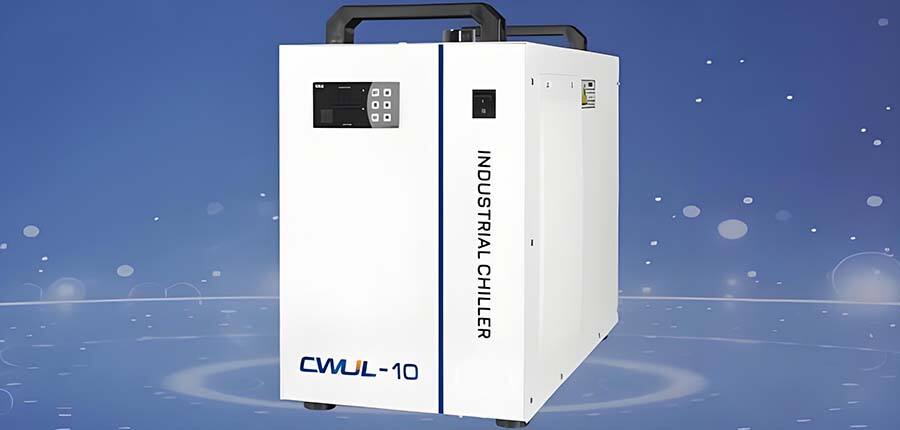Core Differences Between Water and Air Cooled Chillers
1. Cooling Mechanisms: Water vs. Air Heat Transfer
Air cooled and water cooled chillers work on different heat transfer principles mainly convection and conduction to control temperatures in factories and plants. With air cooled models, heat gets rid of itself through the surrounding air thanks to those big fans and condenser coils we see sticking out. Water cooled chillers take a different approach altogether by using water as the main way to move heat around. Water just handles this job better because it can hold so much more heat energy before getting hot itself. That's why water based systems tend to knock out heat faster than air cooled ones. Research backs this up too water transfers and takes in heat at rates way above what air can manage, which explains why most big industrial operations go for water cooling when scale matters. Another thing worth mentioning about climate conditions ambient temps matter a lot here. Water cooled systems stay consistent regardless of whether it's freezing outside or sweltering hot since water maintains its temperature far better than air does throughout the day.
2. System Components and Infrastructure Needs
Air cooled chillers have several key parts like fans, evaporators, and condensers that all team up to get rid of heat. What makes these units so handy is they don't need much extra stuff around them, which is great for locations that are tight on space or don't have good access to water. Water cooled chillers tell a different story though. They come with a whole bunch of extra equipment including cooling towers, pumps, and various water treatment systems just to run properly. Maintaining all this gear takes special knowledge about how to handle water treatment to stop problems like scaling and corrosion from happening. Another big plus for air cooled systems? They take up way less room since there's no need for those bulky cooling towers. This matters a lot in cities where every square foot counts and nobody wants complicated installations getting in the way of business.
3. Environmental Impact and Resource Consumption
Air cooled chillers tend to use far less water than their counterparts, which makes them better suited for places where water is scarce. The tradeoff though? They aren't as efficient in terms of energy consumption compared to water cooled models that save money on electricity bills in the long run. Water cooled systems definitely win on energy efficiency but need steady access to water supplies. This creates problems in dry regions where water conservation matters a lot. Some research shows these water cooled chillers actually produce fewer emissions throughout their lifetime, especially during peak usage periods. Still, companies dealing with them often run into trouble with local regulations around water usage and wastewater disposal. For businesses trying to pick between these options, looking at what rules apply in their area becomes essential, given how green initiatives are becoming more important across manufacturing sectors these days.
Operational Mechanisms Explained
1. How Air Cooled Chillers Dissipate Heat
Air cooled chillers work by using the air around them to get rid of heat, mostly through something called the condenser. Inside the chiller, refrigerant takes in heat, sends it over to the condenser coil, and fans push regular air across that coil so the heat can escape and cool down the refrigerant again. There are different types of chillers out there, but two common ones are reciprocating and screw models. Reciprocating chillers tend to be pretty efficient when they're not working too hard, whereas screw chillers handle constant running better, especially in bigger setups. Some research looked at how these different designs perform and found that efficiency really depends on outside temperatures and what season it is. Hot weather can actually make air cooled chillers less effective because the difference in temperature between the air and refrigerant gets smaller, which means they don't work as well.
2. Water Cooled Chiller Condenser Loops and Cooling Towers
Water cooled systems work by moving water through condenser loops that get rid of excess heat. Cooling towers are essential parts of this setup since they help cool down the water by letting some of it evaporate. This process lowers the water temperature before sending it back into the system. How these towers are built matters a lot for how well they perform. Different designs and materials will affect just how efficient and reliable the whole system remains over time. Most operators know that cooling towers lose water in several ways at once evaporation happens naturally, some gets blown away by wind, and there's also what's called blowdown when water needs to be drained out periodically. All these losses add up and hit the bottom line pretty hard. That's why proper water treatment becomes so important for keeping everything running smoothly, stopping scale buildup on equipment, and making sure chillers last longer instead of breaking down unexpectedly.
3. Efficiency in Different Climate Conditions
The efficiency levels between air and water cooled chillers really depends on where they're installed, so designers need to think about climate factors when making choices. Water cooled models tend to work better in hot areas because water just absorbs heat so much better than air does. Look at those numbers for Energy Efficiency Ratio (EER) and Coefficient of Performance (COP) metrics in warm regions, and water cooled systems consistently come out ahead. Air cooled units face challenges during heatwaves though. When outside temperatures get too close to what's inside the refrigerant lines, performance starts slipping. Humid environments are another story altogether. Water cooled chillers keep running smoothly even when moisture is in the air since the heat exchange remains stable. Some industry reports point out that cold weather locations actually see better results with air cooled systems since there's less chance of freezing problems with water lines. All these regional differences highlight why facility managers should adjust their cooling approach according to local weather patterns if they want maximum efficiency from their chillers.
Key Considerations for Selection
1. Energy Efficiency and Operational Costs
Energy efficiency matters a lot when looking at chillers because it directly affects how much money gets spent running them day after day. Air cooled models tend to eat up more electricity than water cooled ones, and this usually means bigger bills over time. Water cooled systems work better from a thermodynamics standpoint since they use water to transfer heat away, which cuts down on power needs. The way utility companies charge for electricity makes things even trickier though. If rates go up, air cooled systems start costing businesses extra cash fast. Looking at real world examples shows water cooled chillers generally cost less to operate year after year compared to air cooled versions. The Department of Energy has been pushing for higher efficiency standards lately, especially for commercial grade chillers, so companies really need to think about going green these days. Plus there are actual financial benefits too. Programs like Energy Star offer rebates and other incentives that help offset some of the initial investment costs when switching to more efficient equipment.
2. Space Requirements and Installation Complexity
When choosing between different chiller systems, space requirements and how complicated the installation will be play a big role in making decisions. Air cooled chillers take up quite a bit of room because they need good airflow all around them. Water cooled models usually fit into smaller spaces but come with extra stuff like cooling towers that need to be installed too. Installing these systems isn't simple either. Water cooled ones require lots of plumbing work and might involve getting special permits for water use. Where something gets put also matters for how well it works. Put an air cooled system somewhere with bad ventilation or really hot weather and it just won't perform right. From what we see in the field, water cooled systems tend to run pretty reliably after setup, but getting them going initially is tough. Most people who install these things tell us that air cooled units go up much faster without needing those fancy specialists everyone talks about when discussing water cooled installations.
3. Water Availability vs. Air-Dependent Systems
How much water is available locally plays a big role in deciding whether to go with water-cooled chillers or stick with air-based ones, particularly where droughts are common. Water cooled systems just don't work well in areas running low on H2O because nobody wants to waste precious resources on something that guzzles water. These systems drink up so much water that companies need to really think through their options before making commitments. Air cooled systems eliminate this problem entirely since they run without any water at all, which makes them a smarter choice for regions struggling with water shortages. Looking at actual water savings often makes air cooling look better, especially if we're talking about years down the road instead of just short term costs. Recent improvements show air cooled chillers getting better too, with things like variable speed compressors cutting down electricity bills while still keeping operations cool. Anyone responsible for equipment decisions should definitely check local water supplies first when picking out chillers. It's not just about being green either it's about staying compliant with regulations and avoiding problems later on when water gets even scarcer than it already is.

